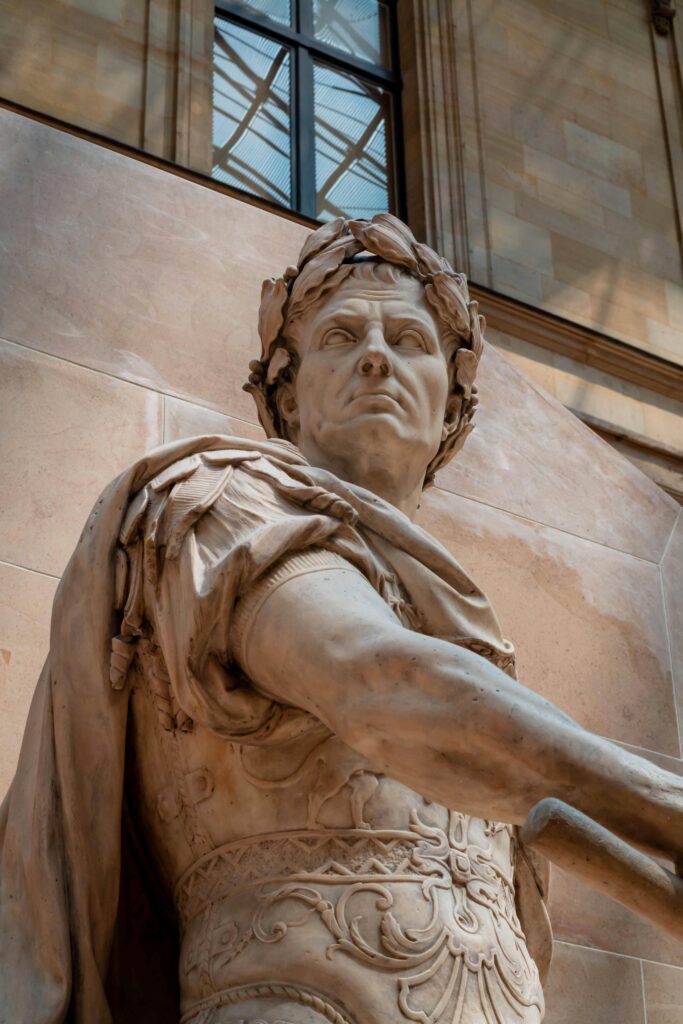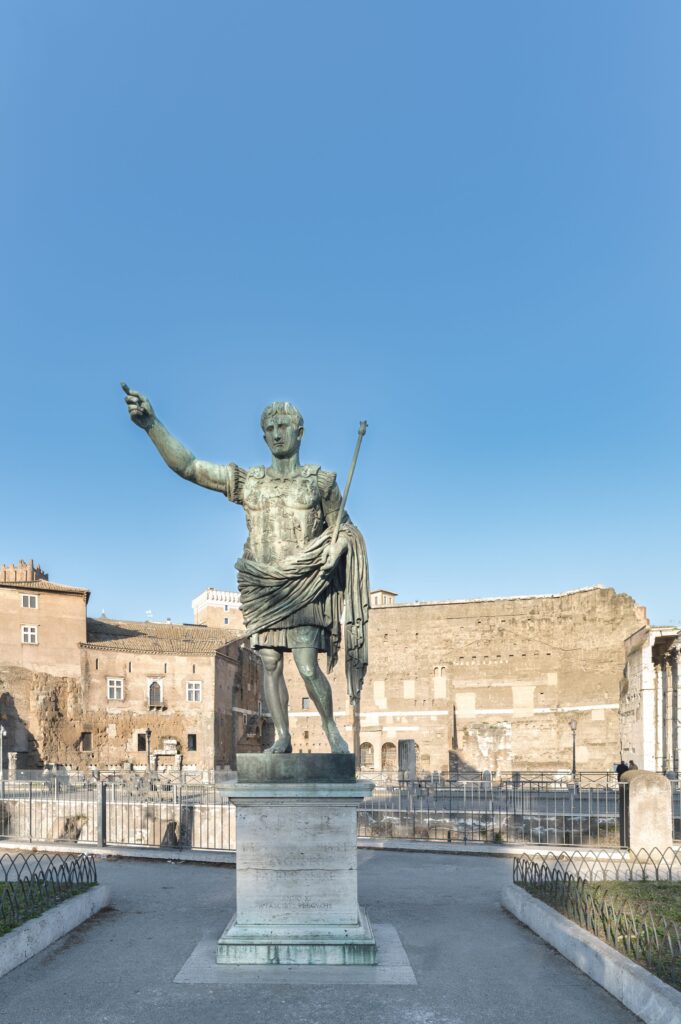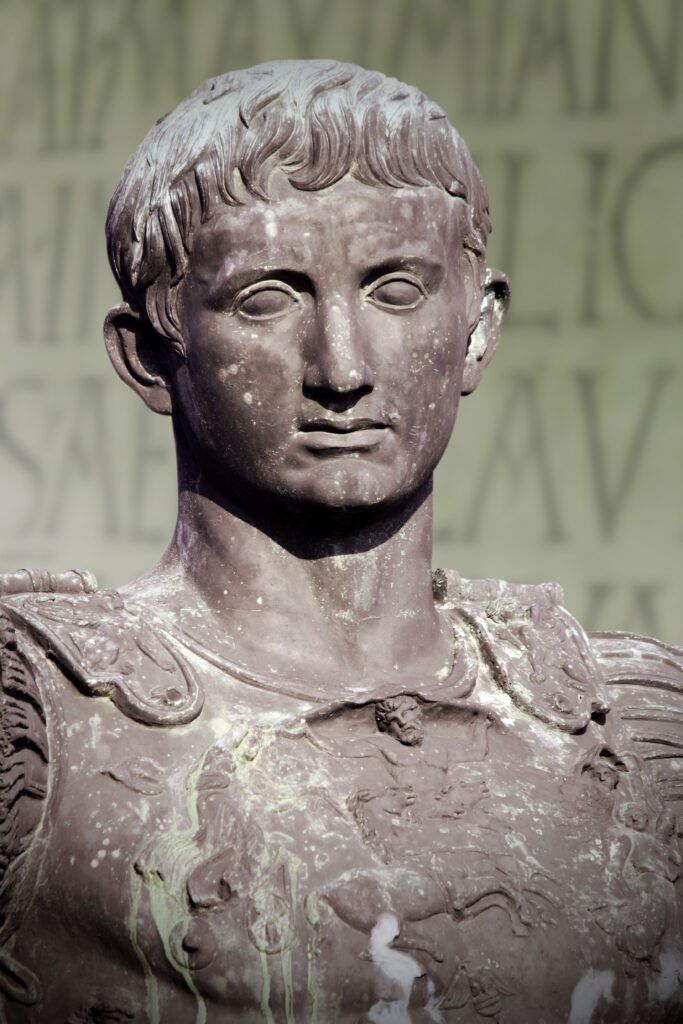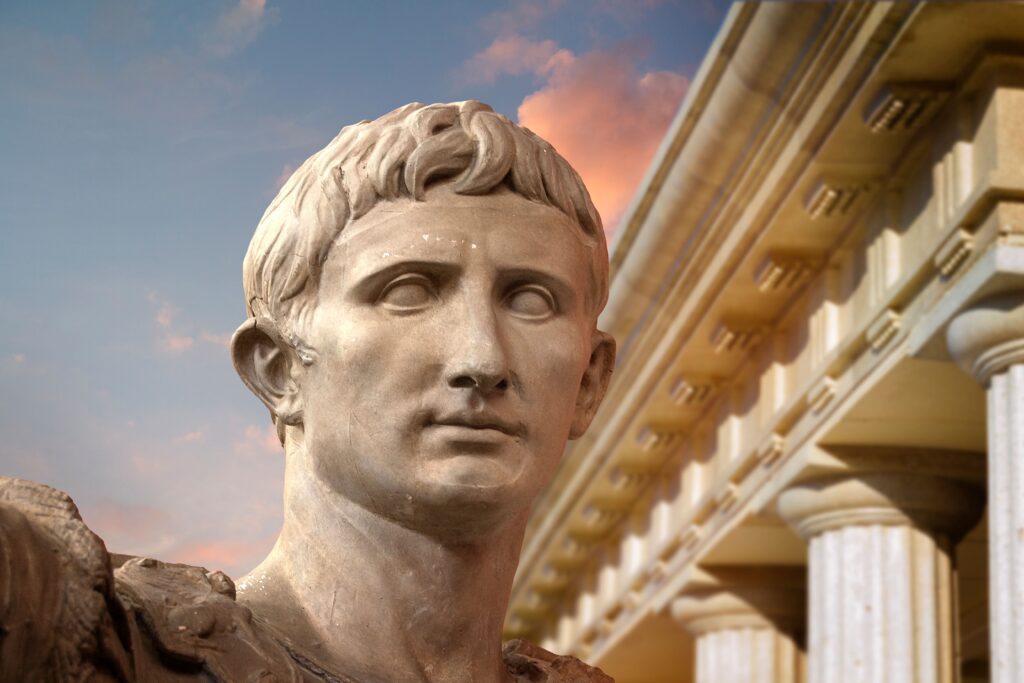The gleaming figure of Augustus of Prima Porta stands in perfect stillness, his right arm raised in address to invisible legions. Sunlight catches the emperor’s marble face at precisely the right angle, creating an almost supernatural luminosity that seems to radiate from within the stone itself. Despite being carved nearly 2,000 years ago, this masterpiece appears more alive than many sculptures created yesterday. The subtle transitions between facial planes, the impossibly thin drapery revealing the contours beneath, and the surface treatment that somehow captures both hardness and softness simultaneously—these qualities have left contemporary sculptors and art historians in a state of perpetual wonder.
For all our technological advancement, for all our computer-guided precision tools and material science breakthroughs, we stand humbled before works created with primitive iron tools and human hands. The Romans achieved artistic effects that continue to elude us, despite our seemingly limitless resources and knowledge.
“What we’re facing isn’t just a gap in technical ability, but a fundamentally different relationship with materials and time,” explains Dr. Alessandra Moretti, curator of Roman sculpture at the Vatican Museums. “The techniques weren’t simply lost—they existed within a complete cultural ecosystem that no longer exists.”
This revelation raises a profound question: In an age where we can 3D print buildings, clone animals, and send robots to Mars, how can we remain unable to recreate artistic techniques from antiquity? The answer lies in three specific Roman sculptural methods that have defied modern replication attempts, representing not just lost techniques, but lost ways of seeing and interacting with the physical world.

The Pentelic Marble Mystery: Surface Treatment Beyond Modern Understanding
The most famous Roman sculptures possess a surface quality that modern artists call “living stone.” This isn’t poetic exaggeration but a technical assessment of a puzzling phenomenon. Roman sculptors, particularly those working with Greek Pentelic marble during the Augustan and Hadrianic periods, achieved a surface treatment that combines contradictory qualities: it appears both hard and soft, reflective yet absorbent of light, and possesses an inner luminosity that seems to emanate from within the stone itself.
Marcus Vitruvius, the Roman architect whose writings survived antiquity, mentioned a mysterious final treatment for marble called “ganosis”—a process involving heated wax and possibly other materials applied to the nearly-completed sculpture. However, his descriptions remain frustratingly vague, likely because the technique was considered common knowledge not worth detailing for contemporary readers.
Contemporary sculptor Michael Binkley, who has spent three decades attempting to recreate Roman surface techniques, describes the challenge: “I’ve tried every combination of modern waxes, resins, and polishing compounds. I’ve consulted with material scientists and conservation experts. We can get close—sometimes very close—but there’s always something missing. The Romans achieved a subsurface light penetration that creates what I can only describe as a ‘living’ quality. Their marble almost appears to have a pulse.”
Archaeological evidence suggests a multi-stage process involving graduated abrasives, including pumice, different varieties of sand, and possibly a final application of a mixture containing beeswax, olive oil, and certain mineral compounds. Recent spectroscopic analysis of Roman sculptures has detected trace elements of tin, lead, and organic compounds that might have played a role. Yet even with this knowledge, modern reproduction attempts have failed to fully capture the effect.
The challenge may be further complicated by the fact that Roman sculptors likely had access to freshly quarried marble with different properties than the aged stone available today. Additionally, certain plants used in ancient polishing compounds have either gone extinct or exist in altered forms.
Dr. Helena Santos of the Archaeological Institute of Rome believes time itself may be a factor: “We’re discovering that some of these surface treatments may have required decades or even centuries to fully develop their characteristic appearance. The Romans were creating art for eternity—they understood processes that might take generations to complete.”
Perhaps most significantly, the Romans approached sculpture with fundamentally different aesthetic goals. Where modern restoration focuses on preserving original appearances, Roman sculptors sought to transcend the limitations of their materials, creating stone that appeared more alive than life itself.

The Impossible Drapery: Chisel Work That Defies Physics
Stand before the “Three Graces” relief from the Forum of Trajan or examine the delicate clothing folds on any major Roman portrait statue, and you’ll witness what many contemporary sculptors consider a technical impossibility: marble drapery so thin it appears translucent, with fold upon fold of fabric seemingly lighter than paper, all carved from solid stone.
This effect—of heavy marble transformed to appear weightless—represents more than technical virtuosity. It demonstrates a philosophical approach to sculpture that merged technical precision with artistic vision in ways modern artisans struggle to comprehend, let alone reproduce.
“The problem isn’t just technical skill,” explains James Harrington, master stone carver and professor at the Royal College of Art in London. “It’s that Roman sculptors seemed to work in complete defiance of marble’s natural properties. Modern sculptors are taught to respect the material’s limitations—the Romans simply ignored them. Their marble drapery seems to float with a delicacy that should cause the stone to shatter, yet it’s stood intact for two millennia.”
Ancient sources mention specialized chisels called “gradine” with multiple teeth of varying widths, allowing sculptors to remove stone with unprecedented precision. Archaeological excavations have uncovered some examples, but the complete toolkit—and more importantly, the techniques for using these tools—remains elusive.
More puzzling still is how Roman sculptors achieved consistent thinness across large areas without fracturing the stone. Modern attempts at replicating these effects typically result in broken pieces or require compromises in design. Roman sculptors regularly achieved marble drapery measuring less than 3cm thick that could extend unsupported for substantial distances—a structural feat that would challenge even computer-guided carving systems today.
Dr. Marcus Chen, materials scientist at MIT who has studied Roman sculptures using non-invasive scanning techniques, notes: “We’ve discovered evidence of sophisticated understanding of marble’s crystalline structure. The Romans somehow identified and worked with the natural grain of the stone in ways that allowed them to push the material to its absolute limits. They weren’t just skilled craftsmen; they possessed an intimate knowledge of the stone’s molecular composition that we’re only beginning to comprehend with advanced technology.”
Adding to the mystery is evidence suggesting Roman sculptors used a counterintuitive approach to carving drapery. Rather than working from the figure outward (as is standard practice today), they appear to have conceptualized the entire composition in three dimensions from the beginning, working inward from a block’s exterior. This required not just technical skill but an extraordinary ability to visualize the finished work within an uncarved block.
Apprentice systems that trained sculptors from childhood, with specialized focus on specific elements like drapery or hair, created artists with narrowly defined but incredibly deep expertise. Modern sculptural education, with its emphasis on individual expression and varied techniques, simply doesn’t produce the same specialized mastery that made such effects possible.

Bronze Colossals: Lost Casting Methods for Monumental Works
The 30-foot bronze Colossus of Constantine once dominated Rome’s landscape. The gigantic bronze statue of Marcus Aurelius on horseback survives as one of the few ancient bronzes not melted down during subsequent eras. These monumental works represent a casting capability that disappeared with the fall of Rome and remains beyond our technical abilities despite modern foundry advances.
Roman bronze casting reached a scale and complexity that modern foundries can only approach through fundamentally different methods. Where contemporary large bronzes are typically created in numerous small sections and welded together, the Romans achieved seamless casting of enormous single elements—sometimes entire limbs or torsos of colossal statues.
Foundry master Richard Williams, whose workshop has created bronzes for major museums worldwide, explains the difficulty: “We’ve been trying to replicate Roman large-scale casting methods for years, working from Pliny’s descriptions and archaeological evidence. We can match their bronze alloys now, but their casting techniques for monumental works remain elusive. They achieved uniform metal thickness and structural integrity across massive forms that we can only approach using modern technologies the Romans didn’t have.”
Archaeological evidence suggests the Romans developed a lost-wax casting system specifically for monumental works, involving complex networks of channels for molten bronze that prevented cooling before reaching distant sections of the mold. They created specialized furnaces capable of reaching and maintaining precise temperatures across batches of molten metal weighing several tons—a feat requiring extraordinary engineering without modern temperature controls.
Perhaps most remarkable was their development of core materials and armatures for supporting these massive forms during casting. Modern attempts to recreate their methods have struggled with core failure, uneven cooling, and metal flaws that the Romans somehow avoided despite having no access to computer modeling or modern metallurgical science.
Dr. Elena Kostopoulos, archaeometallurgist at the University of Athens, has studied fragmented remains of Roman bronze workshops: “The scale of their operations was industrial, yet their quality control was flawless. We’ve found evidence of sophisticated clay preparation facilities, specialized fuel processing, and workshop organizations that suggest a level of process standardization we’d associate with modern manufacturing. Yet their results surpassed what we can achieve today.”
Recent research suggests that Roman bronze masters may have used empirical methods developed over centuries to achieve effects modern science is only beginning to understand. Their bronze alloys often contained precisely calibrated amounts of lead, tin, and sometimes zinc—proportions that varied depending on the specific part of the sculpture being cast, the anticipated weathering conditions, and even the desired color and patination effects.
More intriguing still is evidence that these massive casting operations weren’t one-off affairs but represented standardized production systems. The Romans could replicate their monumental casting achievements repeatedly across the empire, suggesting a highly developed knowledge transfer system that disappeared with the empire’s fall.
Why These Techniques Remain Lost Despite Modern Technology
The disappearance of these remarkable techniques wasn’t simply a matter of lost knowledge—though the burning of the Library of Alexandria and the tumultuous fall of Rome certainly erased crucial documentation. Rather, their loss represents the disappearance of entire systems of knowledge and practice that existed within specific cultural contexts.
Three factors made these Roman sculptural achievements possible: time, specialization, and cultural priorities. Roman master sculptors trained from childhood in rigidly specialized apprenticeship systems lasting decades. Their society valued artistic perfection enough to invest extraordinary resources in what we would consider impractically time-consuming processes. And perhaps most importantly, their conceptual approach to materials differed fundamentally from our own.
“Romans didn’t see marble as we do,” explains Dr. Moretti. “For them, stone contained hidden life that the sculptor’s task was to reveal. This wasn’t just philosophical—it informed their technical approach. They worked with materials rather than on them, with a patience and perspective incompatible with modern production paradigms.”
Contemporary sculptor Thomas Jenkins, who has spent years attempting to recreate Roman marble techniques, offers a humbling perspective: “At some point, you have to accept that certain knowledge can be lost forever. We can speculate, experiment, and approximate, but some techniques require not just information but cultural contexts that no longer exist. The Romans weren’t just technically skilled—they inhabited a different relationship with materials and time itself.”
This sobering reality doesn’t diminish modern sculptural achievements but places them in historical context. Each era develops techniques aligned with its values and worldviews. Roman sculptural methods represented their unique cultural priorities—and perhaps their loss reminds us that not all human achievements progress linearly toward improvement.
Preserving What Remains: The Critical Importance of Roman Artistic Legacy
While we may never fully recover these lost techniques, their study offers profound insights into both ancient Roman civilization and our relationship with materials and craftsmanship today. The remaining examples of Roman sculptural brilliance represent more than artistic achievements—they embody a different conception of humanity’s relationship with the physical world.
Modern conservation science has made remarkable strides in preserving these treasures, even as our understanding of their creation remains incomplete. Advanced imaging techniques, molecular analysis, and artificial intelligence-assisted research continue to reveal new aspects of Roman sculptural methods previously hidden from view.
“Every year brings new discoveries,” notes Dr. Chen. “We recently identified tool mark patterns suggesting specific rhythmic movements Roman sculptors used when finishing marble surfaces—something invisible to the naked eye but revealed through computational analysis of surface data. These insights don’t solve all the mysteries, but they bring us incrementally closer to understanding their methods.”
Perhaps most valuable is how these enduring mysteries challenge our modern assumption of technical superiority. They remind us that knowledge can move in cycles rather than simply accumulating—that human history includes peaks of achievement that may rise and fall rather than steadily climbing upward.
The Romans themselves understood this cyclical nature of knowledge. They studied and sometimes copied Greek sculptures from centuries earlier, recognizing they were attempting to recover techniques already fading from memory. Their humility before earlier achievements perhaps explains their dedication to preserving and building upon what came before.
In this spirit, our continued study of Roman sculptural techniques represents not just archaeological curiosity but an acknowledgment of our place in the long arc of human artistic endeavor—sometimes advancing, sometimes recovering, always connected to those who worked stone and metal before us with tools both simpler and somehow more profound than our own.

The Enduring Mystery
As you stand before a Roman portrait bust or relief sculpture, look closely at how light interacts with the marble surface. Notice the impossible thinness of carved drapery, or the subtle transitions between textural elements. What you’re witnessing isn’t just artistic skill but the tangible evidence of lost knowledge—techniques developed across generations and vanished despite our best efforts to recover them.
In this technological age that celebrates innovation above all else, these enduring mysteries offer a humbling reminder that not all human knowledge moves forward continuously. Sometimes, remarkable achievements can slip away, leaving only their results without the processes that created them.
Perhaps that’s what makes these Roman sculptural techniques so fascinating—they represent not just lost methods but lost ways of seeing and understanding materials. They remind us that true mastery sometimes requires not just technical skill but cultural contexts and relationships with materials that evolve or disappear across time.
For those fascinated by these enduring artistic mysteries, our newsletter “Hidden Histories” explores forgotten innovations and remarkable achievements from the classical world. Each month, we delve into another aspect of Roman ingenuity that continues to influence—and sometimes mystify—our modern world. Subscribe today to join a community of history enthusiasts uncovering the technological and artistic secrets of antiquity’s greatest civilization.

